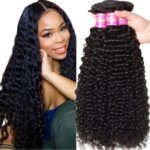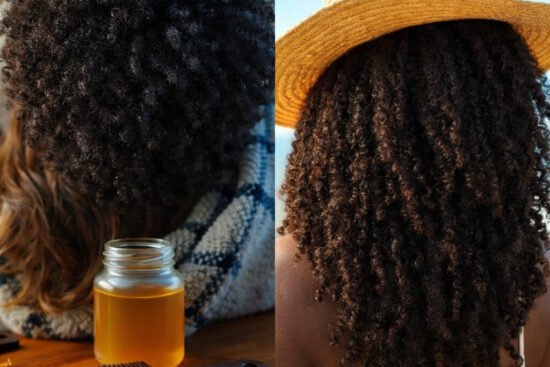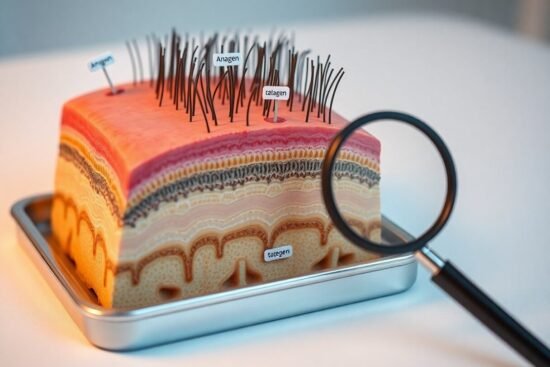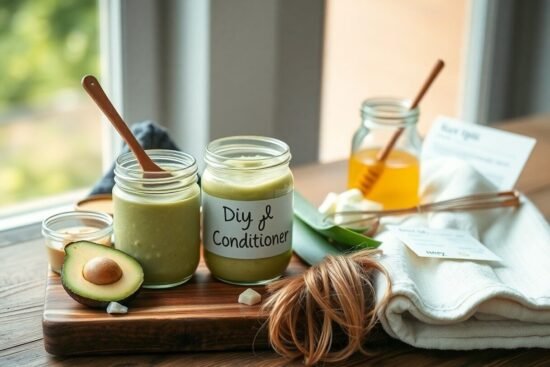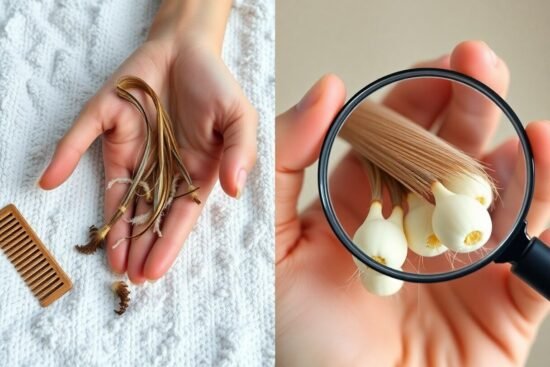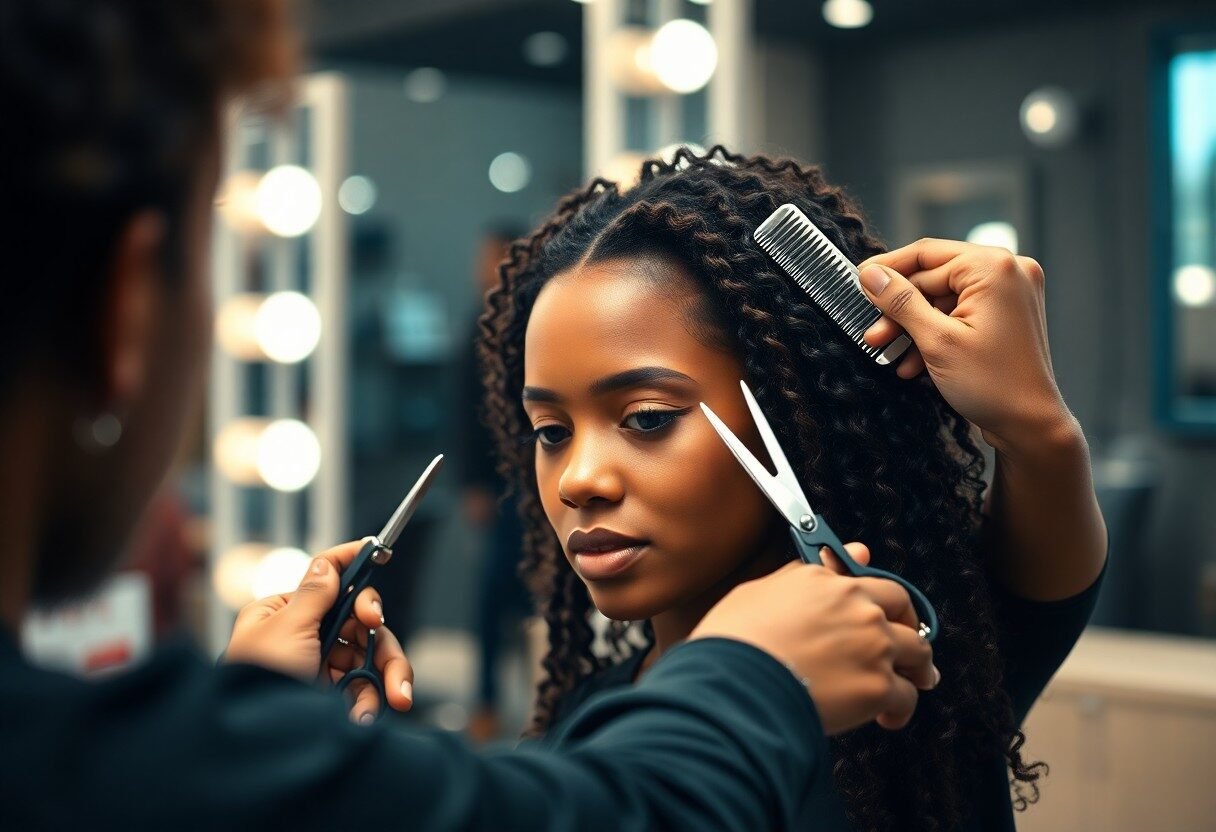
Just like any part of your hair care routine, trimming natural hair is imperative for maintaining its health and style. In my experience, it’s important to consider how often you should trim to avoid issues like split ends and breakage, which can set back your growth goals. I’ll discuss the factors that influence trimming frequency and the positive effects it can have on your hair’s overall vitality. Understanding these elements not only helps enhance your natural texture but also keeps your mane looking its best, so let’s dive in!

Key Takeaways:
- Trimming natural hair is imperative for maintaining its health and preventing split ends.
- Most experts recommend trimming every 6 to 8 weeks, depending on individual hair growth and condition.
- Regular trims can help maintain your desired hairstyle and promote overall hair growth.
- For those with curly or textured hair, trimming can enhance curl definition by removing dead weight.
- Pay attention to signs that your hair needs a trim, such as increased frizz or difficulty in styling.
- Trimming can also give you the opportunity to reassess your hair care routine and make necessary adjustments.
- Be sure to communicate with your stylist about your hair goals to achieve the best trimming results.
The Critical Role of Healthy Hair in Natural Hairstyles
Healthy hair forms the foundation of stunning natural hairstyles. Vibrant, well-maintained hair not only looks better but also holds styles more effectively, whether it’s curls, twists, or braids. When your hair is nourished and strong, it reflects light beautifully, exuding a natural shine that enhances your overall appearance. On the contrary, unhealthy hair can lead to breakage, frizz, and a lackluster look, making it necessary to prioritize hair health as you explore various styles. Each healthy strand contributes to a fuller, more visually appealing hairstyle that showcases your natural beauty.
The Science of Hair Growth
Understanding hair growth begins with recognizing that hair grows in cycles. On average, your hair grows about half an inch per month, totaling roughly six inches a year. Each strand has a life cycle that lasts around two to six years, and during this time, proper care is vital for optimal growth. Vitamins, minerals, and overall health play a significant role in determining the strength and resilience of your hair, impacting how well it can withstand styling and environmental stressors.
How Damage Accumulates Over Time
Damage builds up incrementally through a combination of factors such as heat styling, chemical treatments, and environmental exposure. Each time you style your hair with heat or apply harsh chemicals, you risk compromising the hair’s structure, primarily the cuticle. Over time, this damage can lead to split ends, brittle strands, and ultimately, hair loss. It’s necessary to recognize that neglecting to address damage can exacerbate these issues, which is why maintaining a consistent trimming routine—every 6-8 weeks—is key to preserving hair health.
Even minor incidents of damage can lead to profound consequences if left untreated; it’s akin to a small crack in your home’s foundation that worsens over time. For instance, excessive use of flat irons can weaken hair bonds, leading to frayed ends that require more drastic measures to repair. Additionally, lack of hydration or irregular moisturizing can leave your hair vulnerable to breakage, compounding the issue. Monitoring the effects of styling practices and environmental factors is necessary for preventing long-term damage and maintaining vibrant, resilient hair.
Signs It’s Time to Trim Your Natural Hair
Recognizing the signs that your natural hair needs a trim is crucial for keeping it healthy and manageable. Be proactive in assessing your hair’s condition to prevent further damage. Common indicators include visible signs of wear, changes in your hair’s texture, and overall manageability. Trust your instincts; if your hair doesn’t feel right, it might be time to act.
Identifying Split Ends and Breakage
One of the most obvious signs that your natural hair needs a trim is the appearance of split ends or noticeable breakage. If you observe hair strands that appear frayed, thin, or unraveling, this damage can lead to even more extensive issues if not addressed. Look for hairs that feel rough or look uneven, as these are strong indicators that a trim is necessary.
Recognizing Changes in Texture and Manageability
Changes in your hair’s texture and how easily it responds to styling can be a telltale sign that a trim is overdue. You might find your curls losing their definition or feel more difficult to detangle. If your once-smooth locks now feel coarse or brittle, that unevenness often stems from split ends or lack of shape. This time, a trim can restore your hair’s resilience and keep it looking vibrant.
When you notice changes in texture, it’s usually your hair’s way of signaling that it needs attention. Over time, build-up can create a dull appearance, making your strands feel lifeless. If washing, conditioning, or styling no longer yields the desired results, it might indicate that split ends are weighing your hair down. Taking the time to trim can breathe new life into your hair, making it feel lighter, bouncier, and easier to manage. A well-timed trim helps maintain your hair’s integrity and functionality, allowing your natural beauty to shine through once again.
The Recommended Trimming Schedule
For natural hair, adopting a consistent trimming schedule can significantly enhance your hair’s vitality. I typically recommend trimming every 6 to 12 weeks, depending on your hair type and growth rate. For those with a curlier texture, you might find that a 10-12 week schedule suits you best, as it allows enough time for new growth while also keeping split ends at bay. Monitoring your hair’s condition regularly helps decisively determine when your next trim should be.
Factors Influencing Trim Frequency
Various elements dictate how often you should trim your hair. These include:
- Hair Type: Curly versus straight influences susceptibility to damage.
- Styling Methods: Frequent use of heat can accelerate split ends.
- Product Use: Heavy products can lead to buildup, impacting hair health.
- Environmental Conditions: Weather extremes can affect hair texture and strength.
Perceiving your hair’s specific needs is vital to maintain its health.
Seasonal Considerations for Hair Health
Different seasons can significantly affect your hair’s health and, consequently, your trimming schedule. In cold weather, hair may become drier and more brittle due to lower humidity, which increases the likelihood of split ends. Conversely, humidity can cause frizz and build-up in warmer months, necessitating more frequent trims to maintain manageability. Observing how your hair reacts during various seasons helps in planning your trim schedule, ensuring you combat damage caused by seasonal changes.
To illustrate, I’ve noticed that in summer, my hair tends to get frizzier, leading me to trim every 6 weeks to combat the effects of humidity. Meanwhile, in the winter months, a 10-12 week schedule works better, as my hair appreciates some length while I implement nourishing treatments to maintain moisture. Ultimately, adapting your trimming routine to the seasons helps in achieving healthier, more manageable natural hair year-round.
Techniques for Effective Trimming
Utilizing the right techniques while trimming natural hair can make all the difference in achieving a polished look. I often suggest adopting a methodical approach, whether it’s the twist and snip or the point cutting technique. Each allows for precision, minimizing damage to the hair shaft while ensuring an even trim. I find that regularly checking both the length and the health of the ends really helps maintain the optimal balance between style and manageability.
Choosing the Right Tools and Methods
Having the right tools makes trimming your natural hair much easier and more effective. I typically use high-quality hair shears, as they provide a clean cut that reduces split ends. Additionally, a wide-tooth comb greatly assists in detangling your hair prior to trimming, allowing for a more accurate assessment of what needs to go. Investing in good tools can genuinely transform your hair care routine and produce better results.
DIY vs. Professional Trimming: Weighing the Options
The choice between trimming your natural hair yourself or visiting a professional depends heavily on your comfort level and skill. If you’re experienced with hair cutting and know your hair’s needs, DIY trimming can be a feel-good way to maintain length. However, if you’re unsure, a professional stylist can provide expert insight and enhance your style with precision that’s hard to replicate at home.
After considering both options, I often lean toward professional trimming when I feel my hair needs a significant makeover or if I’m unsure about maintaining specific styles. Professionals not only bring expertise but also access to advanced techniques and tools. For instance, they can assess your hair’s overall health and recommend the ideal cut for your texture and growth pattern. On the other hand, DIY trimming is a fantastic way to ensure maintenance between appointments; just be sure you’re well-prepared and confident in your techniques to avoid mishaps.
The Psychological Benefits of Regular Trimming
Regular trimming offers significant psychological advantages that go beyond just appearance. Each visit to the salon can feel like a rejuvenating ritual, promoting a sense of self-care and well-being. I often find that after a trim, the feeling of lightweight, fresh hair lifts not only my physical appearance but also my mood, providing a satisfying boost to my overall mental health.
Boosting Confidence and Self-Esteem
A fresh haircut can significantly elevate your confidence levels. When I walk out of the salon with neatly trimmed ends, I feel reinvigorated and ready to take on the world. This immediate boost in self-esteem often translates into a more positive demeanor, affecting how others perceive and interact with me, thus leading to a cycle of increased self-assurance.
The Connection Between Hair Care and Personal Identity
Hair is often a prominent aspect of personal identity, and how I choose to care for it can reflect my values and self-image. Regular trims not only maintain the health of my hair but also allow me to express my unique style and persona. The way I present my hair can serve as an extension of my individuality, making each trim a conscious choice about how I want the world to see me.
When I invest time and effort into my hair care routine, I’m also making a statement about my self-worth and identity. This connection is especially relevant in cultures where hair carries deep significance. By nurturing my hair with regular trims, I’m embracing my natural beauty and reinforcing a positive self-expression that resonates with my sense of self. Each trim reaffirms my identity, allowing me to feel empowered and confident in my skin.
Summing up
Drawing together the importance of trimming natural hair, I find that regular trims help maintain your hair’s health and appearance. I recommend evaluating your hair every six to eight weeks, as this helps remove split ends and promotes growth. By prioritizing trims, you can keep your natural hair thriving, enhancing its strength and texture. So, be proactive in caring for your hair; a little trim goes a long way in achieving your styling goals!
FAQ
Q: How often should I trim my natural hair?
A: The frequency of trimming natural hair can vary based on hair type and health. Generally, it’s recommended to trim every 6-12 weeks. If you’re experiencing a lot of split ends or breakage, you may want to trim more frequently. For those with healthy hair, aligning with the 8-12 week mark is often sufficient.
Q: Why is trimming necessary for natural hair?
A: Trimming is vital for maintaining the health of natural hair. It removes split ends and prevents further damage from traveling up the hair shaft. Regular trims can also help your hair retain its shape and bounce, enhancing its overall appearance and manageability.
Q: Can I trim my hair myself, or should I go to a professional?
A: While you can trim your hair yourself, visiting a professional stylist can ensure an even cut and proper handling of your hair type. If you choose to trim at home, make sure to use sharp hair scissors designed for cutting hair, and take your time to achieve the desired result.
Q: What should I do if my ends feel rough but I don’t want to trim?
A: If your ends feel rough but you’re not ready to trim, consider deep conditioning treatments to improve moisture and manageability. However, it’s important to monitor the health of your ends closely, as neglecting splits can lead to more significant damage down the line.
Q: Will trimming my hair make it grow faster?
A: Trimming does not directly affect hair growth rates. Hair grows from the scalp, and regular trimming helps maintain hair health by eliminating split ends. This can create the appearance of healthier, fuller hair, which may make it seem like it’s growing faster because you’re preventing damage that can slow growth.
Q: How do I know if I need a trim?
A: Signs you need a trim include visible split ends, roughness in texture, and an overall lack of shape. If your curls or waves look uneven or your hair feels generally unhealthy, these can be indicators that a trim is due.
Q: Is it possible to prevent the need for trims?
A: While trims are an vital part of hair care, you can minimize their frequency by adopting good hair care practices. Regular moisturizing, avoiding excessive heat, protecting your hair while sleeping, and maintaining a healthy diet can all contribute to stronger, healthier hair with fewer breakage and split ends.
